The peace lily is a famous houseplant known for its dark green foliage and white blooms. They’re indoor plants in most areas because peace lilies grow in a tropical environment in their natural habitat. With how available they are in garden centers, there’s no question that anyone has access to the tools needed to successfully grow one.
Often pigeonholed as drama queens that are hard to plant sit (potentially even by a master gardener you know), peace lilies can be very sensitive to the conditions they’re grown in. While this does add a slight learning curve to their cultivation, that doesn’t mean it’s hard. Even the least plant-savvy among us have an easy time looking after these lovely plants.
One thing to know about these plants is they are toxic to humans and pets. Therefore, keep them out of reach of small children and fur friends. Now, let’s discuss the peace lily, and cover the basic needs of these popular indoor plants.
Subscribe to the Epic Gardening Podcast on iTunes or Spotify
Quick Care Guide
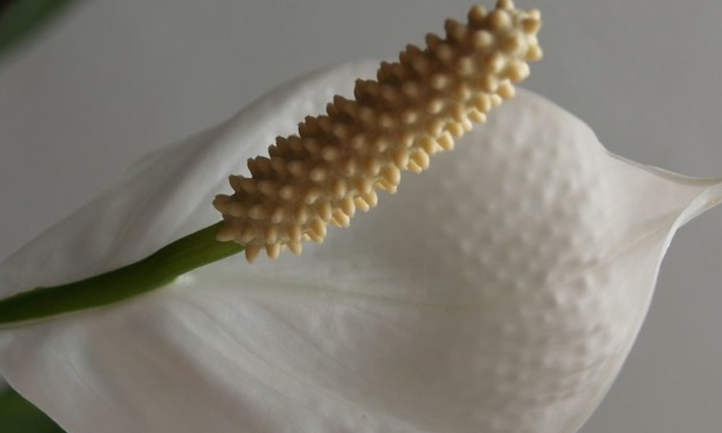
| Common Name | Peace lily, spath, white flag, white sail plant |
| Scientific Name | Spathiphyllum |
| Family | Araceae |
| Height & Spread | Up to 6 feet tall and wide |
| Light | Medium to low indirect light |
| Soil | Moisture-retentive and well-draining |
| Water | Moist but not wet soil |
| Pests & Diseases | Spider mites, mealybugs, scale insects, root rot, mosaic virus, leaf blight |
All About the Peace Lily Plant

Peace lilies exist in the Spathiphyllum genus, which contains about 47 species of flowering plants. These plants are commonly referred to as spath, white flag, and white sail plant outside their most common name: the peace lily plant. All members of the genus originate in tropical regions of North and South America, as well as those in southeastern Asia.
Peace lilies grow roughly 3 to 6 feet tall and wide, depending on how they’re grown. Of course, in their native habitat, they’re most likely to flourish. Because that habitat is fairly specialized, they’re often grown as houseplants.
With the right amount of light, these plants produce blooms that aren’t true lilies, but spathes. Persistent leaves emerge from a central stem, unfolding a stark white flower with a central stamen in spring. As the flowers age, they turn green, then brown before falling from the plant.
Peace lilies represent peace, love, and healing. The peace plant is common in funeral arrangements and springtime festivities. They are propagated via seed and through division. They have a reputation for being dramatic when the conditions they are growing in are slightly less than optimal. What are those conditions? Let’s take a look at different types of this lily plant, and then we’ll discuss caring for them.
As we mentioned before, these common houseplants are mildly toxic due to calcium oxalate crystals within their leaf cells. If one of your pets happens to get into a Spathiphyllum plant you have indoors, call the pet poison helpline. It may be worth keeping them out of reach of children and pets, or not keeping them at all if this is a concern.
Types of Peace Lilies
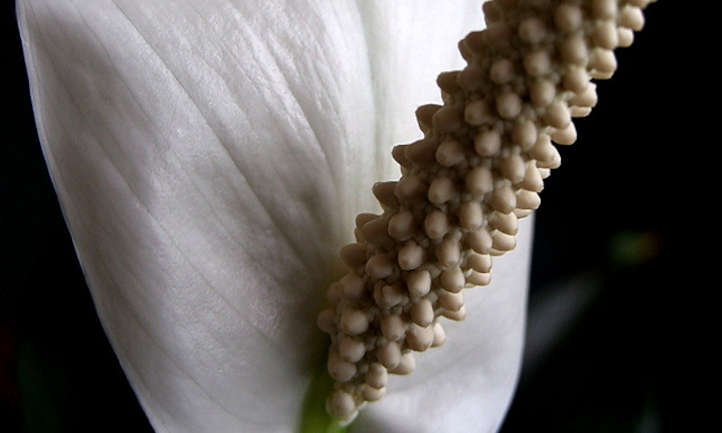
Because there are 47 species of peace lilies, we can’t cover them all here. However, we can identify the three major types on the market. These types are determined by growth habits which relate directly to size. Some are categorized based on their leaf patterns as well.
Small Varieties
Smaller peace lilies generally don’t grow beyond 1.5 feet tall and wide.
’Power Petite’ is a compact peace lily that tops out at around 15″ or so.
Another great choice for a smaller peace lily, ‘Wallisii’ has longer and more rippled leaves but ends up at about 15″ tall as well. It is often called Japanese peace lily, though it comes from South America.
Medium-sized Varieties
These lilies top off in the 3-foot range. They’re great for growers with a little more space than that needed for petite peace lilies.
‘Mauna Loa Supreme’ is one of the common lilies sold around the US. It gets to 3-4′ tall and leaves that reach 9″ wide.
’Clevelandii’ grows much shorter than ‘Mauna Loa Supreme,’ at 1-3′ tall. It has leaves that reach 1.5′ long, making it a unique choice.
Large Varieties
Large peace lilies grow best outdoors in the subtropics where they can reach 6 feet tall and wide. Indoor growers should have ample room for peace lily leaves to spread out and extend into the living space.
The largest variety out there, ‘Sensation’ reaches up to 6′ tall. The broad leaves grow to 20″ long. There’s also a smaller variety known as ‘Sensation Mini’.
Variegated Peace Lilies
These peace lilies reach varying sizes, but have lovely yellowish or cream streaking on their dark green leaves. If variegated foliage is what you’re looking for, that’s great! They’re probably the most common peace lilies around.
The only variegated peace lily is ‘Domino’. ‘Domino’ is striking. It looks like someone splashed white paint all over the leaves.
Peace Lily Plant Care
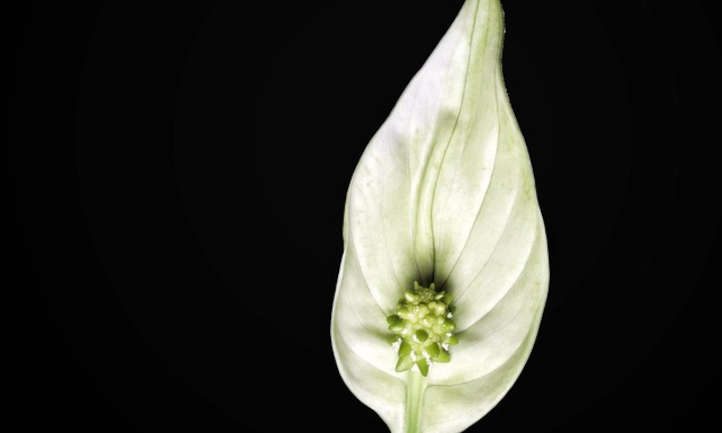
Now that we’ve discussed the peace lilies you can add to your houseplant collection or plant in your subtropical garden, let’s discuss caring for a peace lily. We’ll discuss the basics, as well as how to help your plant produce flowers and how to repot and propagate.
Light and Temperature
Peace lilies thrive in low-light areas out of direct sunlight. Place them 5 to 8 feet from a window in indirect sunlight, and they’ll do just fine. If you place them in direct sunlight for long periods of time, your plant will experience yellowing leaves that die and fall off. That’s because they tend to live in subtropical regions below forest canopies which have bright, indirect light. For window growing, place them near a south or east-facing window in the northern hemisphere or near a west or north-facing window in the southern hemisphere. Their hardiness range includes zones 10 and 11.
If you have no access to light, give them more light by growing them under T5 fluorescent grow lights. They do best in temperatures between 68° F and 85° F during the day, with nighttime temperatures about 10 degrees cooler. When temperatures enter the mid-50s, relocate most peace lilies to a warmer area. They will die if they’re left in these conditions with insufficient light for long. Keep them away from cold drafts emitted from an AC unit or nearby doors.
Water
When we say a peace lily makes a big show of small shifts in growing conditions, most of the time, we’re talking about moisture levels. The rule for peace lily watering is to keep the soil moist but not soggy. Standing water kills the root system. The most common reason that people kill their peace lilies is overwatering. No more than once a week is plenty for this plant. Water less during fall through late winter as the peace lily blooms won’t emerge until early spring.
If you see a peace lily drooping, it needs water. Don’t wait too long, though – severely drooping leaves mean the plant has been dry long enough to damage the root system. The bottom leaves may turn yellow and fall off. Chlorine in tap water can damage your lily. If possible, use filtered or distilled water or leave your tap water out for 24+ hours so the chlorine breaks down. Room temperature water is also important.
Peace lilies tend to love humid climates – higher than the 30 to 50% that exists indoors. Therefore, provide a humidifier that keeps the air about 50 to 60% humid, or lightly mist your peace lily leaves daily in the growing season with distilled or filtered water. For a peace lily outdoors, find a shady, moist area to grow them, or plant them near a water source.
Soil
A standard well-draining, nutrient-rich potting soil works for peace lilies. If you find it holds too much moisture, add some perlite or coarse sand to promote better drainage. To make your own potting mix, add equal parts garden soil, coarse sand, and perlite. The soil should be well-aerated and in a pot with a drainage hole to prevent rot. Outdoors, ensure the soil is moisture-retentive and well-draining. Slightly acidic soil with a pH of 5.0 to 6.5 is best.
Fertilizer
Fertilizing peace lily isn’t necessary. If you decide to feed them, don’t go overboard. Use a well-balanced 20-20-20 fertilizer but dilute it to 25% of the recommended dose. If you notice brown leaf tips and blooms turning brown, you’ve probably over-fertilized. Fertilize only in the spring and summer growing season, as peace lilies enter dormancy in fall and winter.
Repotting Peace Lily
Peace lilies like to be root-bound. Therefore, caring for peace lily involves repotting only once every other year. When you’re repotting a peace lily, place it in a pot with fresh potting soil that is a couple of inches larger than the original, so the roots are still together.
Here are some signs your plant is too root-bound and needs re-potting:
- Your plant is absorbing all of the water you pour on it within only a couple of days
- Crowded roots are showing through the drainage holes of the pot
- The stalks are crowding the pot
Propagating Peace Lily
The simplest way to propagate new plants is by dividing them. A new plant starts to form at the side of the plant that can be cut away and re-potted. Choose crowns that have at least two leaves present and use a sharp, disinfected knife to separate them from the parent plant. Try to get as many roots as you can – this will make it easier for them to establish themselves. Pot the crowns in a 3″ pot in the same soil you use for the parent plant and water them immediately. Avoid fertilizing for at least 3 months or your plant will suffer leaf burn.
You can also sprout peace lily seeds extracted from spent flowers in moist soil any time of year indoors and let them grow into new plants.
Pruning Peace Lily Plants
Pruning isn’t necessary, but you can prune to keep your lily looking beautiful throughout the year. Because every stem produces only one of the white flowers you love, once that flower dies, it may not look amazing. Cut it back at the base of the stem to remove it and spur new growth. Or prune off yellowing leaves or leaves that are drooping severely. While it’s better to prevent these problems in the first place, sometimes the leaves are too far gone and must be removed.
Troubleshooting Peace Lily
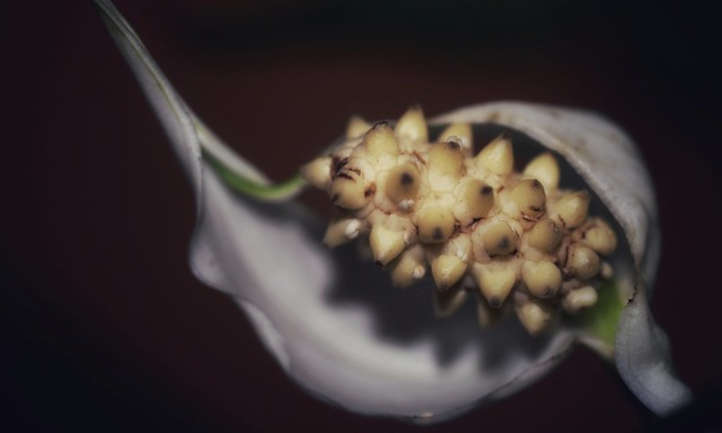
Now that we’ve discussed peace lily indoor care, and touched on how to grow them outdoors, let’s discuss a few of the issues they may have. Overall a peace lily house plant is a peaceful plant that is easy to care for, and mitigating any obstacles is simple.
Growing Problems
Yellow leaves indicate too much light, but brown spots are burned areas where direct sunlight hit the leaves. Keep your plants in bright, indirect light to ensure they have enough shade to protect their light green leaves and not so much direct sun they don’t bloom. This is easy for peace lily care indoors but more difficult if the plant is growing in the ground. Still, you can move them from an in-ground location if needed. Do this in the cooler seasons.
If your peace lily flowers are pale green, then either you have given them too much fertilizer, or the flowers have come to the point where they reach maturity and fade. If the flowers bloom green, reduce fertilizing, and next season the flowers bloom white.
Pests
In peace lily care, look out for spider mites. These tiny insects weave webs around the green foliage and flowers of your peace lilies as they suck sap from the plant. If they are left to their own devices, they’ll sap the plant of nutrients and kill it. To get rid of them, wipe an alcohol-soaked cloth along all the leaves and stems, removing the webs and mites. Wait a couple of days, and follow up with an insecticidal soap spray. Alternatively, a mist of neem oil will kill the mites but isn’t as desirable indoors. Reapply either spray every few days until the mites are gone.
Mealybugs and other scale insects can also latch on to peace lilies, sucking sap from the plants. Mealybugs look like little cottony masses that move slowly around the plant. Other scale insects remain stationary, looking like greasy brown or black bumps on the stems. Remove these with a q-tip soaked in alcohol, and pop them into a bowl of soapy water. Then apply a mist of insecticidal soap or neem oil.
Diseases
Root rot is one of the diseases that makes peace lilies hard to care for, and two types can strike: those that come from the fungal pathogen, Cylindrocladium, and those that come from the water mold, Pythium. If peace lilies are left in low light conditions with waterlogged roots, conditions are more habitable for either. Yellowing and wilting leaves are a sign they’ve taken hold. Cut off the damaged leaves at the soil line, and don’t water for a while to see if the wilting ceases. If not, gently wash the roots before repotting. If this doesn’t help, it’s time to dispose of your plant and sanitize the pot before reuse.
Mosaic virus affects many plants and presents as streaking on the leaves of peace lilies. While it won’t kill your plant, and it won’t prevent the blooming of the peace lily flower, it can spread to other susceptible plants. If this is a concern, dispose of the plant and pot to prevent the spread.
Leaf blight is another disease that comes from a water mold, which is transferred to leaves via splashing water. To prevent it, water at the base. If you see leaf blight in the form of rotted and brown leaf tips and veins, repot the plant in a sterile potting mix.
Frequently Asked Questions
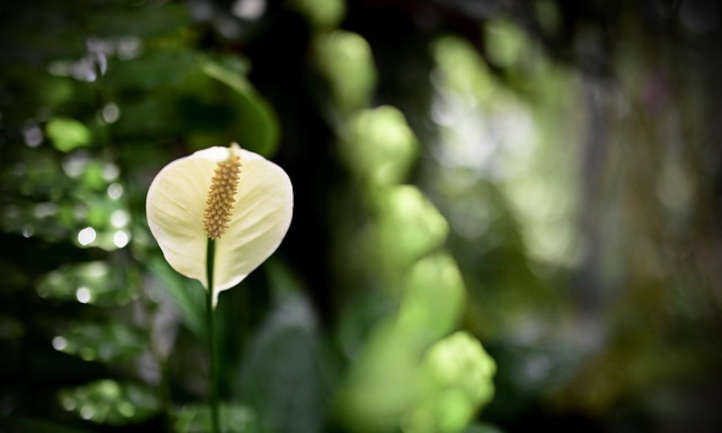
Q: How do you care for a peace lily indoors?
A: This entire piece is focused on that very topic, so check it out!
Q: Does a peace lily need shade or sun?
A: These plants light bright, indirect light. Grow them offset from a window or outdoors in a shady spot with some sunlight peaking through leaves above.
Q: How often should you water a peace lily?
A: As a rule, during the growing season, water them once a week. Allow the top few inches of soil to dry out between watering. Do not water as much in fall and winter.
Q: How long does a peace lily last?
A: They live for three to five years.
Q: Where should I place a peace lily in my house?
A: Put it offset from a bright window, or under a T5 grow light.
Q: Should I cut the brown tips off my peace lily?
A: If you are removing any part of a leaf, take the whole leaf off at the soil line.
Q: How do I get my peace lily to flower?
A: Keep it out of intense light, in indirect light and flowers will bloom.
Q: How do I make my peace lily bushy?
A: Give it slightly more light than it has and it will put out denser foliage.








